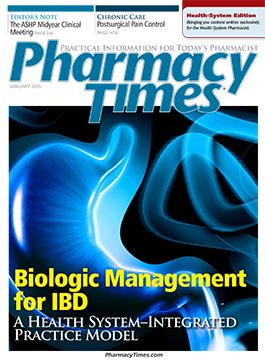Publication
Article
Pharmacy Practice in Focus: Health Systems
The ASHP Midyear Clinical Meeting: Celebrating 50 Years! What a Great Journey
At the American Society of Health-System Pharmacists Midyear Clinical Meeting, held in New Orleans, Louisiana, we celebrated 50 years of this event.
At the American Society of Health-System Pharmacists (ASHP) Midyear Clinical Meeting, held in New Orleans, Louisiana (December 6-10, 2015), we celebrated 50 years of this event. It was special hearing from people who attended the first ASHP Midyear meeting, and it allowed me to reflect on how it has evolved:
- It is the largest gathering of pharmacists in the world. '
- It is focused on advancing clinical pharmacy. '
- Numerous vendors and companies demonstrate products and services that can be used to advance your practice. '
- The residency showcase allows students to learn about the next step in their career development. After attending various educational sessions and networking with many colleagues, I left the meeting with the following observations.
Being a pharmacy director is difficult. These individuals face tremendous pressures, such as decreasing margins on inpatient admissions, shrinking drug product reimbursement, various regulations that require significant attention to detail to maintain compliance with them, meeting institutional quality initiatives, identifying capital to cover sterile product area remodels or new technology purchases, and finding new revenue in the ambulatory setting. All of these things have to be done while maintaining an engaged pharmacy workforce. Not many people are equipped to be successful at balancing all of these competing pressures.
There is tremendous optimism regarding the profession. Although it is difficult to manage all the various activities, I remain optimistic about the profession'of pharmacy. If we are able to exert strong leadership during this season of change and capitalize on the opportunities,'pharmacy departments'can emerge stronger'than they currently are. I'believe this will result in'better patient care than'is currently offered, with'a focus on improving the'use of medications while'ensuring our limited'resources are used wisely.
The potential of technology is amazing. Based'on attending continuing education sessions that discussed future possibilities and evaluating recent technologies developed by different exhibitors, I was impressed by the proliferation and potential of new innovations. Many of these devices were not even contemplated a few years ago. For example, at the Spotlight in Science presentation, researchers described how 'they are creating a “Pharmacy on Demand.” This device, which can fit on a tabletop, will be able to create small molecules and biologic products. Although this device still requires further testing and development, the data presented were compelling, as are the possibilities for what this device could mean for drug manufacturing and pharmacy in the future.
You must be organized to take full advantage of this meeting. Because of the breadth of activities at this meeting, attendees cannot attempt to do everything. Before coming, you should identify and schedule 2 or 3 priorities for each day. If you are like me, many things at this meeting can attract your attention, but without making a strategic schedule in advance, you could leave the meeting without accomplishing your primary objectives.
Conclusion
Although this meeting achieved the 50-year milestone, it still has'a promising future. I hope to be able to attend the 75th meeting. In thinking about the development presented at this meeting, I cannot fathom what health-system pharmacy practice will be like in the future and how the meeting will be organized to prepare individuals for practice. I would appreciate any insights and experiences you might have on these topics. Let me know what you think via e-mail (seckel@unc.edu) or Twitter (@stepheneckel).
Stephen F. Eckel, PharmD, MHA, BCPS, FCCP, FASHP, FAPhA, is associate director of pharmacy, University of North Carolina Hospitals, and clinical associate professor at the University of North Carolina Eshelman School of Pharmacy.







